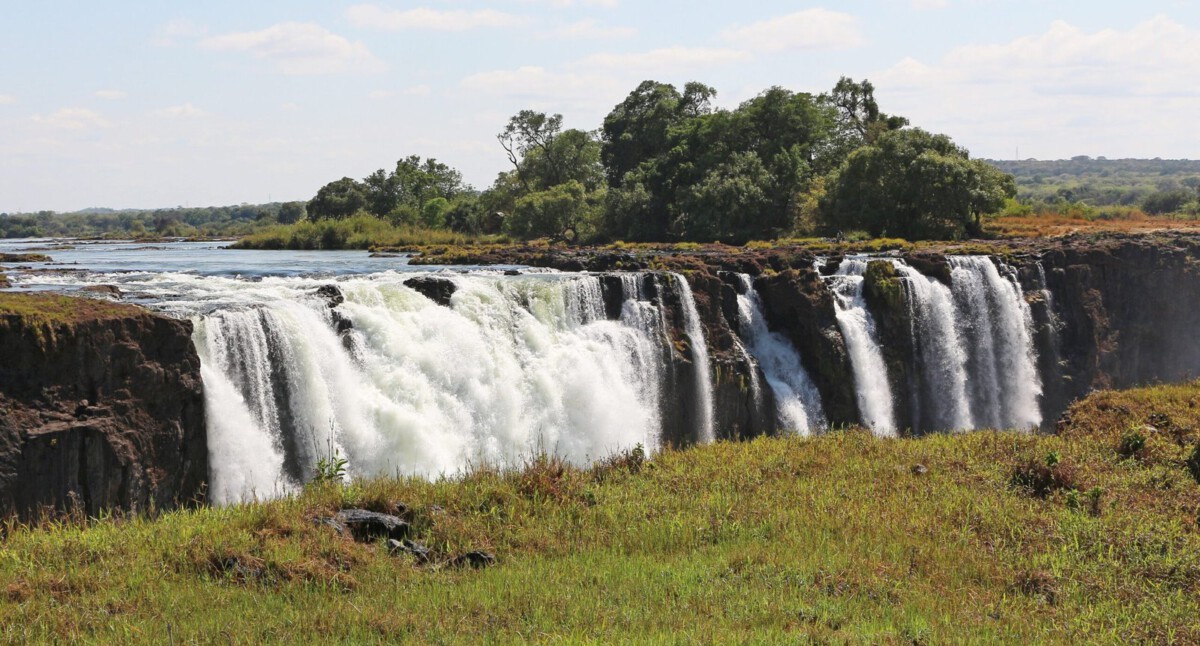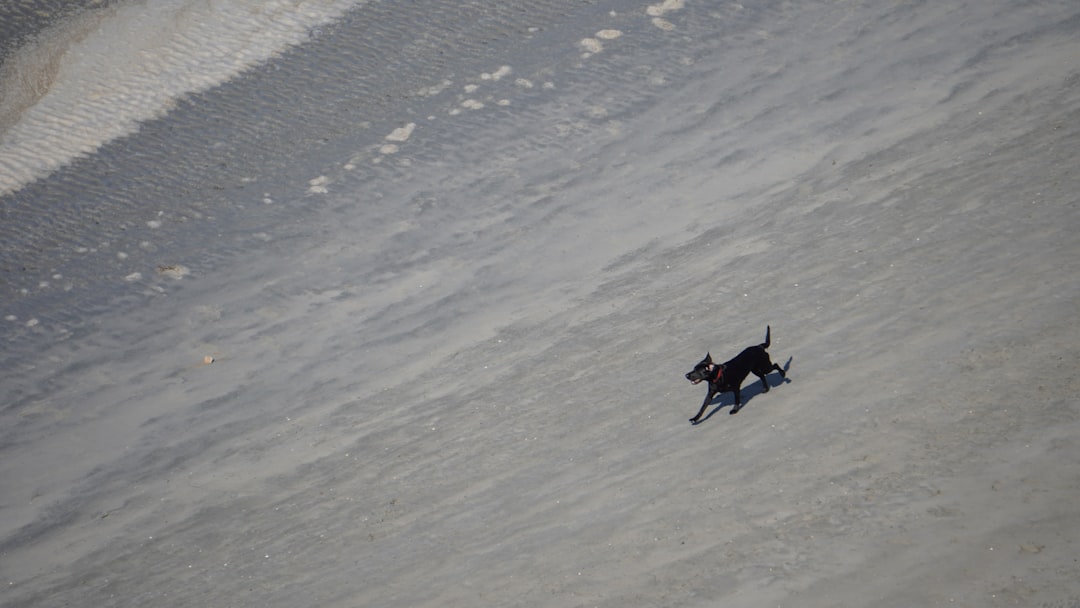Angel Falls, Venezuela

Angel Falls stands as the world’s tallest uninterrupted waterfall, dropping a staggering 3,212 feet (979 meters) from the summit of Auyán-tepui deep in the Venezuelan jungle. Every year, over 100,000 tourists brave the challenging journey to see this marvel, according to recent visitor data. The trek often requires a combination of riverboats and several hours on foot through dense, humid rainforest, making the experience both demanding and unforgettable. The best time to witness Angel Falls in all its glory is during the rainy season, from May to November, when the water flow is at its most powerful and dramatic. Canaima National Park, where the falls are located, is recognized as a UNESCO World Heritage Site due to its rich biodiversity and the presence of indigenous Pemon communities. The remote location means that travelers should be prepared for rustic accommodations and unpredictable weather. Many visitors describe the journey as life-changing, especially when catching the first glimpse of water cascading into mist far below. For those who crave adventure, Angel Falls offers a true test of spirit and endurance.
Iguazu Falls, Argentina/Brazil

Iguazu Falls is a sprawling network of 275 waterfalls stretching for nearly 1.7 miles (2.7 kilometers) along the border between Argentina and Brazil. With the largest drop, known as the Devil’s Throat, plunging 262 feet (80 meters), Iguazu creates a thunderous roar and a mesmerizing cloud of mist. The falls are surrounded by subtropical rainforest teeming with wildlife, including colorful toucans and elusive jaguars. Approximately 1.5 million people visit the falls every year, making it South America’s most popular waterfall destination based on official park statistics. The best months to visit are from November to March, when the river swells and the cascades are at their most impressive. Both the Argentine and Brazilian sides offer extensive hiking trails and panoramic viewing platforms for unforgettable photo opportunities. Boat tours even allow visitors to get close enough to feel the spray of the falls on their faces, adding to the excitement. The sheer scale and energy of Iguazu never fail to astonish even the most seasoned traveler.
Victoria Falls, Zambia/Zimbabwe

Victoria Falls, or “The Smoke That Thunders,” is one of the planet’s largest and most powerful waterfalls, stretching 5,604 feet (1,708 meters) across and dropping 354 feet (108 meters) into the Zambezi Gorge. Drawing around 300,000 visitors annually, Victoria Falls is a highlight for travelers to southern Africa, according to recent tourism reports. The falls are best viewed between June and August, during the dry season, when the water level drops and visibility improves, creating rainbows in the mist. Adventure seekers flock here for heart-racing activities like bungee jumping, white-water rafting, and even helicopter rides that give a bird’s-eye view of the mighty cascade. The surrounding area is abundant in wildlife, with elephants, hippos, and crocodiles frequenting the riverbanks. Visitors can walk rainforest trails and cross the Knife-Edge Bridge for an up-close encounter with the falls’ spray. The UNESCO World Heritage status of the site highlights its cultural and ecological importance. Victoria Falls is a breathtaking spectacle that lives up to its legendary reputation.
Yosemite Falls, USA

Yosemite Falls claims the title of the tallest waterfall in North America, dropping a total of 2,425 feet (739 meters) in three distinct stages within the heart of California’s Yosemite National Park. As many as 4 million visitors journey to the park each year, with Yosemite Falls being one of the main attractions, according to the National Park Service’s latest figures. The best time to visit is during the spring, when melting snow feeds the falls and creates a thunderous rush of water. Hikers can challenge themselves with the strenuous trail to the top, gaining spectacular views of the valley below and the Sierra Nevada peaks beyond. The falls are easily visible from several points on the Yosemite Valley floor, providing accessible viewpoints for visitors of all abilities. The roar of the water and the mist rising into the pine-scented air create a magical atmosphere. Wildlife such as deer and black bears are often spotted in the surrounding woodlands. Yosemite Falls is a testament to the raw power and beauty of nature in the American West.
Plitvice Lakes, Croatia

Plitvice Lakes National Park in Croatia is celebrated for its network of 16 turquoise lakes connected by a series of cascading waterfalls, the tallest being Veliki Slap at 255 feet (78 meters). This UNESCO World Heritage Site welcomes about 1.5 million visitors each year, according to the park’s official statistics. Wooden boardwalks and well-maintained trails wind through lush forests and across the lakes, making it easy for people of all ages to experience the park’s beauty. The best seasons to visit are spring and fall, when the crowds are smaller and the changing foliage adds extra color to the landscape. Plitvice is home to a diverse array of wildlife, including brown bears, wolves, and over 120 species of birds. The clarity of the water, created by natural limestone filtration, allows visitors to see fish and aquatic plants beneath the surface. The park’s serenity and pristine environment have made it one of Croatia’s top tourist destinations. Plitvice Lakes offers a peaceful yet awe-inspiring escape into nature.
Havasu Falls, USA

Havasu Falls is a hidden gem deep within the Havasupai tribal lands of the Grand Canyon in Arizona, famous for its dazzling blue-green waters and dramatic red cliffs. Each year, only about 20,000 permits are issued, making access highly sought after and preserving the falls’ natural beauty. The trek to reach Havasu is a challenging 10-mile (16-kilometer) hike from the Havasupai Village, a journey that tests endurance and rewards perseverance. Spring and fall are the most comfortable times to visit, with cooler temperatures and manageable crowds, according to the Havasupai Tribe’s visitor data. The mineral-rich water creates a surreal turquoise hue, making the falls a photographer’s dream. Nearby, visitors can also discover Mooney Falls and Beaver Falls, each offering its own unique charm. Camping overnight is required, allowing travelers to soak in the peaceful ambiance under a star-filled sky. Havasu Falls is a bucket-list adventure for those willing to make the trek.
Multnomah Falls, USA

Multnomah Falls is Oregon’s most iconic waterfall, plunging a total of 620 feet (189 meters) in two dramatic tiers within the Columbia River Gorge. The falls are easily accessible by a short walk from the parking lot, making them one of the most visited natural attractions in the Pacific Northwest, with over 2 million annual guests, according to state park records. The best viewing conditions are in spring, when snowmelt swells the falls and the surrounding forest is lush and green. The historic Multnomah Falls Lodge at the base offers dining, souvenirs, and a cozy place to warm up after exploring. A paved trail leads to the Benson Bridge, which provides a close-up view between the two cascades and a perfect photo opportunity. Adventurous hikers can continue on trails that climb above the falls, revealing sweeping views of the gorge. The area is also rich in native flora and fauna, from wildflowers to bald eagles. Multnomah Falls is a must-see destination for travelers exploring the Pacific Northwest.
Gullfoss, Iceland

Gullfoss, or “Golden Falls,” is one of Iceland’s most beloved waterfalls, tumbling 105 feet (32 meters) in two dramatic stages into a rugged canyon along the Hvítá River. Over 1 million people visit Gullfoss each year, making it one of the country’s top natural attractions, according to the Icelandic Tourist Board. Summer is the ideal time to witness the falls, as milder weather and long daylight hours make exploration more comfortable. Gullfoss is a key stop on the Golden Circle, a popular tourist route that includes geysers and other geological wonders. Well-maintained paths and viewing platforms give visitors multiple vantage points to admire the falls’ raw power and beauty. The site’s visitor center offers information, refreshments, and Icelandic souvenirs. In winter, the falls often freeze into shimmering ice formations, creating a fairy-tale landscape. Gullfoss is a testament to the dramatic forces that have shaped Iceland’s landscape over millennia.
Sutherland Falls, New Zealand

Sutherland Falls is among the tallest waterfalls in New Zealand, plunging 1,904 feet (580 meters) in a near-continuous drop in Fiordland National Park. The falls can only be reached via the Milford Track, a famous multi-day hiking route that draws thousands of adventurers every season, based on the Department of Conservation’s statistics. The most pleasant weather for trekking is during the Southern Hemisphere’s spring and summer months, from October to April. The falls are fed by Lake Quill, which sits in a glacier-carved basin high above the cliffs. Hikers are rewarded with breathtaking views as water spills over mossy rocks into a misty gorge below. The surrounding wilderness is home to rare birds such as the kea and takahe, as well as lush rainforest and ferns. The Milford Track is often described as one of the world’s great walks, with Sutherland Falls as its crown jewel. The sense of remoteness and untouched beauty makes the journey truly unforgettable.
Dettifoss, Iceland

Dettifoss is renowned as Europe’s most powerful waterfall, with a thundering cascade 330 feet (100 meters) wide and a drop of 144 feet (44 meters) in northeast Iceland’s Vatnajökull National Park. The falls are fueled by glacial meltwater from the mighty Vatnajökull glacier, creating an awe-inspiring display of nature’s force. Dettifoss draws around 300,000 visitors annually, according to park authorities, with access best during the summer months when roads are clear. The sheer volume of water—estimated at 193 cubic meters per second—creates a constant roar and a mist that can be seen from miles away. Rugged hiking trails lead to viewing platforms on both sides of the river, offering different perspectives of the immense drop. The stark, moon-like landscape surrounding the falls adds to the otherworldly atmosphere. Nearby Selfoss waterfall offers a gentler, but equally beautiful, contrast to Dettifoss’s raw power. Dettifoss is a highlight for adventurers exploring Iceland’s dramatic north.







